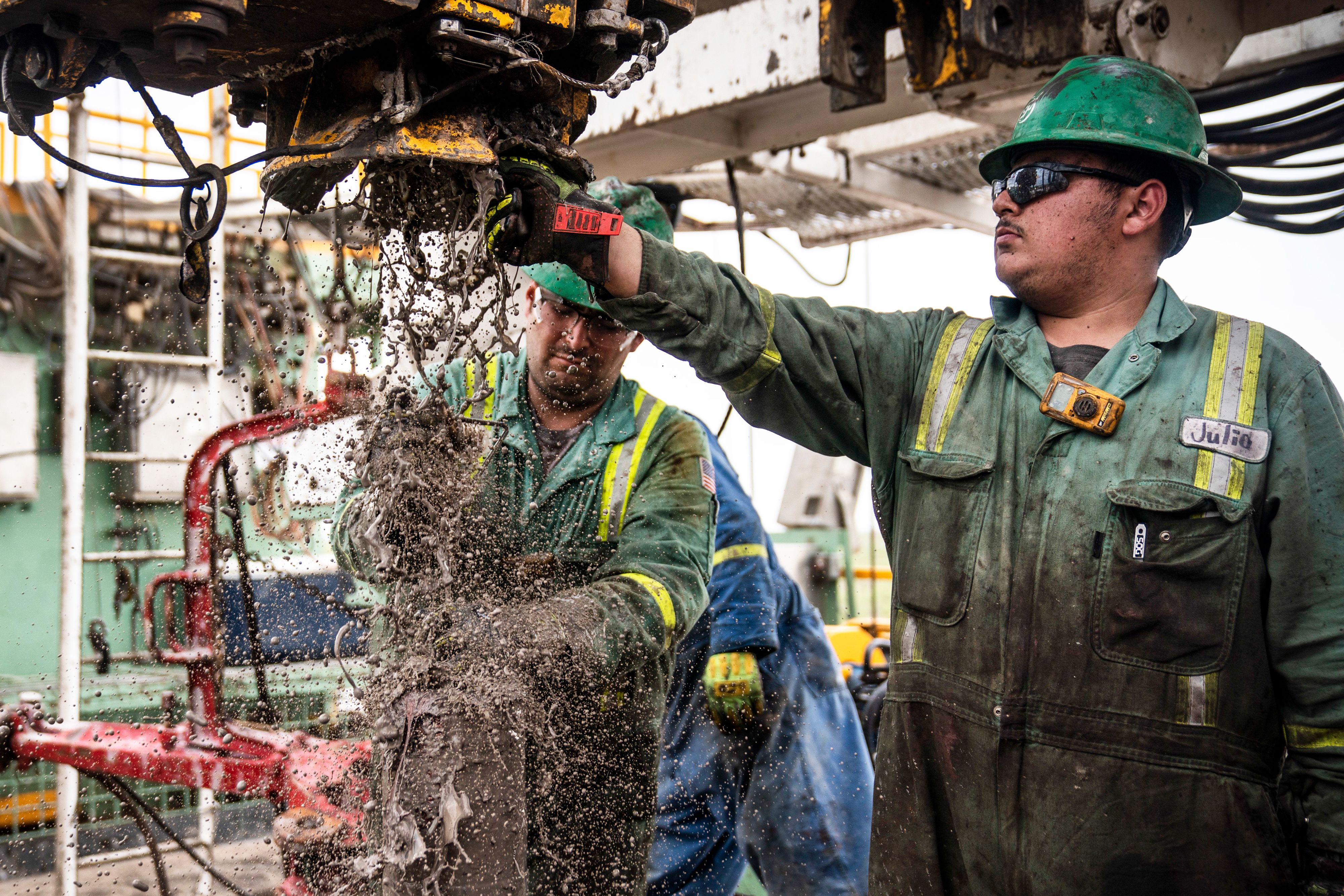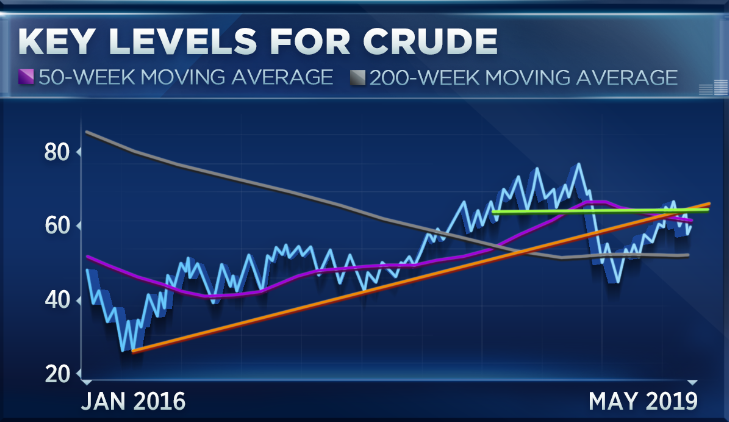Crude could drop to $52 as global pressures persist: Top technician

[ad_1]
The energy market may be in for more pain.
Crude oil prices had their worst weekly performance of 2019 last week, catching some reprieve on Tuesday as flooding in the Midwestern United States restricted supply from several key distribution centers. Overall, this year has been choppy for prices, which are often tied to global macroeconomic developments such as the ongoing U.S.-China trade war.
And there could be more weakness ahead for the commodity, warns top technician Louise Yamada, who predicted in April that the crude rally would stop if prices broke below the $60 level.
Now that they have, with U.S. West Texas Intermediate crude settling just above $59 on Tuesday, “obviously, the upside is limited,” said Yamada, who founded and runs Yamada Technical Research Advisors.
“It’s intriguing if you look at the chart. You can see where it encountered resistance, right at the resistance from the 2018 peak,” she said. “Now, it looks as though things have broken down, and you’re possibly in a trading range between [$]52, where the … 200-week moving average is, and [$]62, which is now our resistance having broken as a support level.”

That could lead to some sideways trading within that range, but will eventually give way to a few concerning momentum trends that seem to be coming to a fore, Yamada said.
“You could have some interim trading. However, the weekly momentum is right on the verge of going negative, which suggests further downside, and the monthly momentum … has been on a sell for quite some time,” the technician said. “So, at the moment, I think the path of least resistance may be to lower levels.”
If oil prices break below last week’s low around $57, Yamada’s more conservative downside targets would be around $55 or $54 a barrel.
“But $52 would be a target, let’s say, if this continued decline is without bounces,” she warned, pointing out that her firm’s outlook is still relatively bleak given oil’s inability to break above a downtrend from the 2008 peak for the last 10 years.
“It does appear to us that we’ve got some kind of a problem with energy,” Yamada said. “The relative strength on the sector has been very poor. It broke down in 2014 structurally, and nothing has changed to improve our view of the sector, the stocks or the commodity.”
Source link





